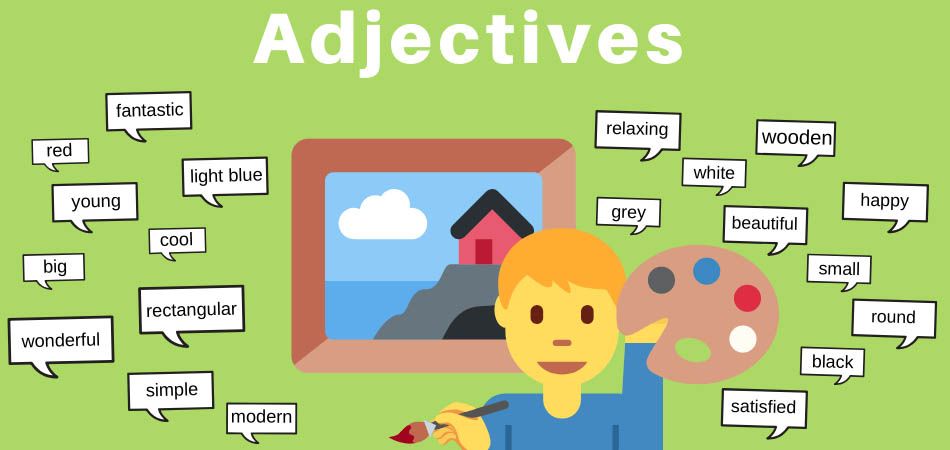Adjectives are the words we use to describe nouns, things like people, animals, plants, objects, places, situations and experiences. They help us add detail to what we are saying by talking about colour, shape, size and other qualities.
For example, adjectives can describe:
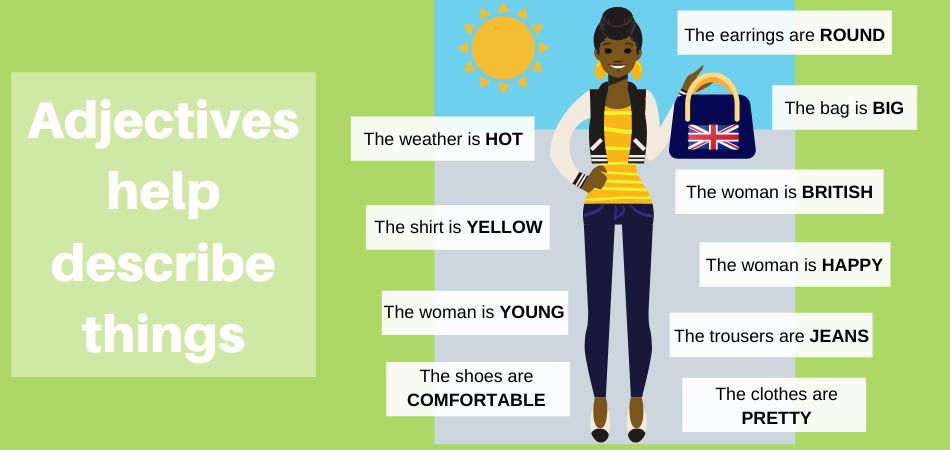
- Opinions/characteristics:
The clothes are pretty.
The shoes are comfortable.
- Size:
The bag is big.
- Feelings:
The woman is happy.
- Temperature:
The weather is hot.
- Age:
The woman is young.
- Shape:
The earrings are round.
- Colour:
The shirt is yellow.
- Origin:
The woman is English.
- Material:
The trousers are jeans.
Adjectives are usually placed in front of the noun they describe
We most often place adjectives before the word they are describing, not after. Be careful as this is the opposite structure from many other languages.
For example:
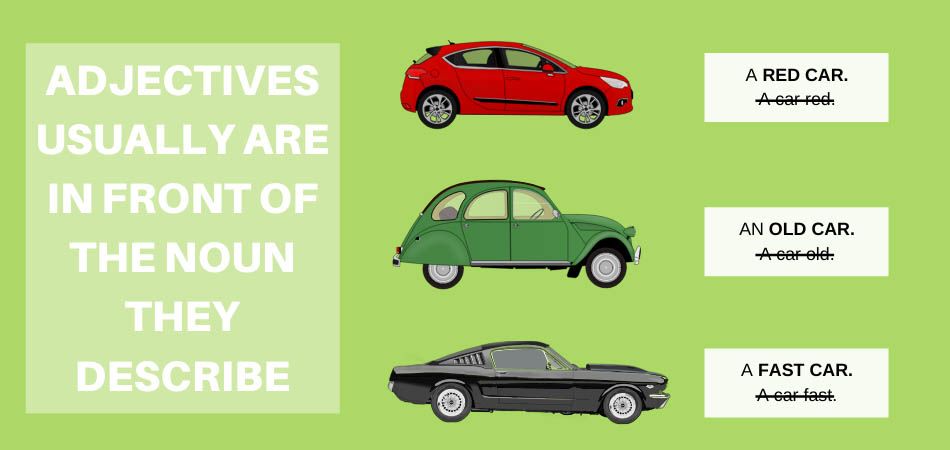
- A red car. An old car. A fast car
NOT
- A car red. A car old. A car fast
We can use adjectives after the verb “to be” and sensing verbs
Another way we can use adjectives is with the verb “to be” or with verbs that describe the senses, like “to look, taste, sound, feel, smell” or “to seem”. In this structure, we place the adjective after the verb.
For example:

In the picture above the couple at the table use “to be” and many sense verbs to describe their food:
- The cake is great. [using “to be”]
- It looks delicious. [“look” is the sense verb for things we can see]
- It smells wonderful. [“smell” is the sense verb for smells and odours]
- It tastes amazing. [“taste” is the sense verb for things we can eat]
- It feels soft. [“feel” is the sense verb for things we can touch]
- They seem satisfied. [“seem” is the sense verb for things we can guess]
Adjectives do not change their form
In English, adjectives always stay the same even if the number of things we are describing changes. This means adjectives in English are invariable.
For example:
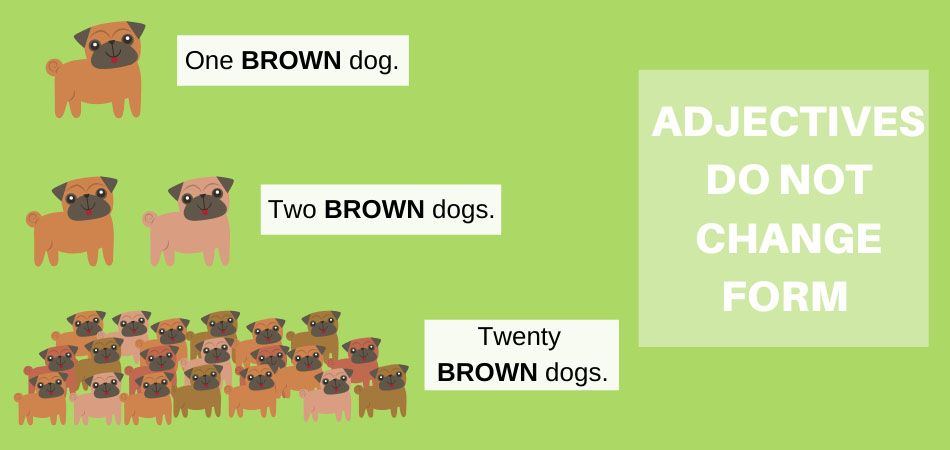
- One brown dog.
- Two brown dogs.
- Twenty brown dogs.
So no matter what the number or quantity is, the adjective stays the same.
What’s your English level?
Find out by completing one of our level tests!
What’s your English level?
Find out by completing one of our level tests!
Use “very” and “really” to emphasise adjectives
We can make adjectives stronger in meaning by using “very/really” in front of them. This emphasises the meaning of the adjective.
For example:
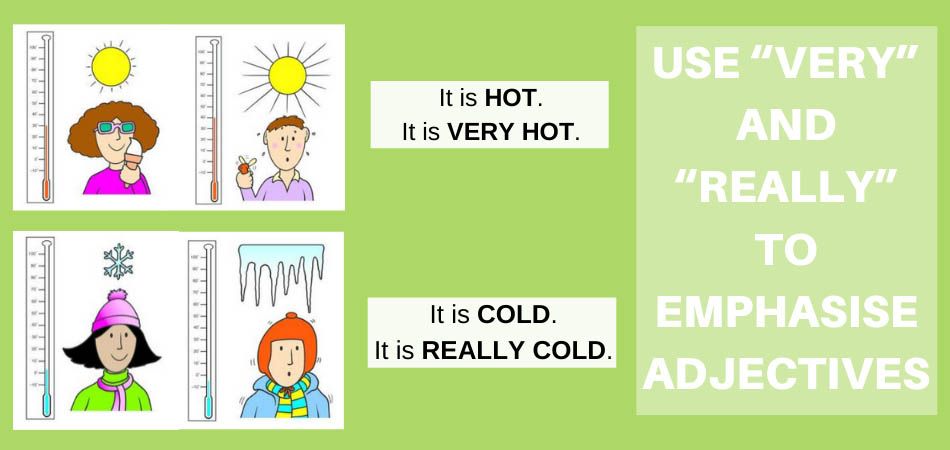
- It is hot. >It is very hot.
- It is cold. > It is really cold.
Multiple adjectives are put in a specific order
When we want to use more than one adjective, there is a natural order we usually place them in, depending on which quality they describe. The order goes like this:
Quantity, Opinion, Size, Temperature, Age, Shape, Colour, Origin, Material.
For example:
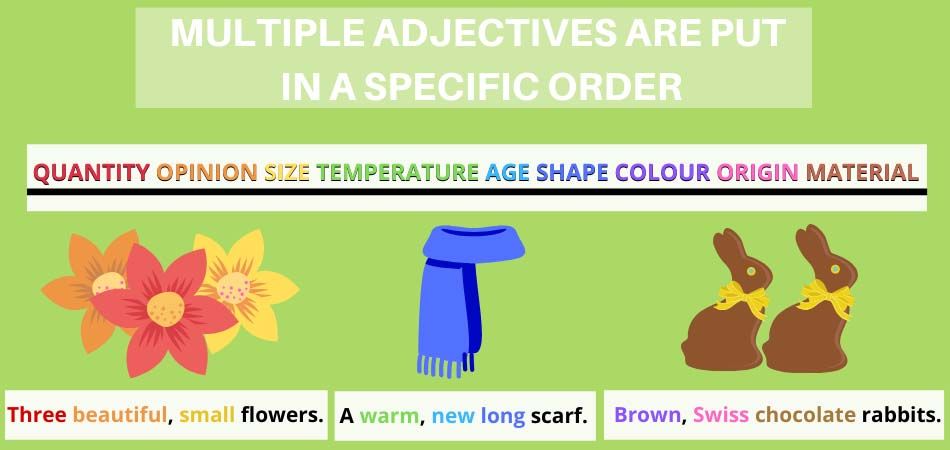
- [Three] [beautiful,] [small] flowers. [Quantity] [Opinion] [Size]
- A [Warm,] [new,] [long] scarf. [Temperature] [Age] [Shape]
- [Brown,] [swiss] [chocolate] rabbits. [Colour] [Origin] [Material]
We know that remembering this order can be quite difficult, so you can use a memory trick called a “mnemonic” to help you. Below is an example we thought of, or you have fun making your own mnemonics. The way mnemonics work is that the letters at the start of each word in the mnemonic phrase correspond the first letters of the words you want to remember:
Queen OctoPus SIngs To All Shy Crabs On Mondays =
(Quantity, OPinion, SIze, Temperature, Age, SHape, Colour, Origin, Material)
Summary
Adjectives in English are quite simple to use as they don’t change in any way, but remember that they usually go before the word they are describing, and be careful of the word order when you are using lots of adjectives together. Being able to describe things is a basic part of any language so we see and use adjectives all the time. Check out some of the songs below which use lots and lots of adjectives! Can you think of any others? Leave us a comment with your suggestions.
What A Wonderful World – Louis Armstrong
For other examples of grammar explained in pictures, check out our GRAMMAR INDEX here.

This article was written by Break Into English’s blog contributor Ilaria Marazzina.

